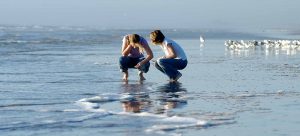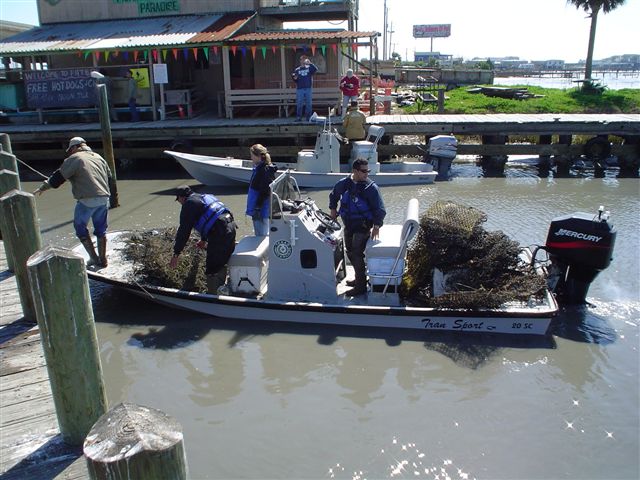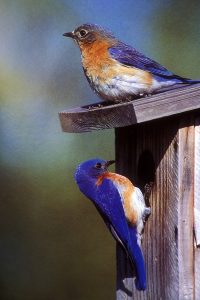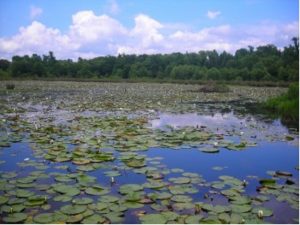February 12th, 2019

Searching for shells on the beach at Mustang Island.
This is Passport to Texas
Are you thinking about a coastal getaway with the family this summer, but wondering where to go? The Texas Parks and Wildlife Television PBS series takes you to an island retreat that offers recreation and relaxation for the whole family. Producer Abe Moore.
As a producer and a dad, I’m always looking for stories or places where it’s kid friendly, or something great for the family. And Mustang Island, it’s just a great place for kids, and then as a parent, you can kind of just hang out.
People, when they come out to the island, they’re looking for relaxation. So, the minute they get here and get set up, that’s all they’re looking to do—just sit back, relax and take it at their own pace.
It’s also a great place for fishing, and beach combing and birding. When I was out there filming, there was a lot of kite surfing going on, so that was really cool. What’s really nice about it, it’s right there in the central part of the coast.
In Texas, I don’t think a lot of people realize within hours you can be here. And when you sit out in this breeze coming off the water, it’s just great. So that’s story’s going to be on Texas Parks and Wildlife television. Enjoy!
The Texas Parks and Wildlife TV segment airs the week of February 17 on PBS stations. Check your local listings.
We receive support from RAM Trucks: Built to Serve.
For Texas Parks and Wildlife…I’m Cecilia Nasti.
Posted in TPWD TV | Comments Off on TPW TV: Mustang Island, Fun for the Family
February 7th, 2019

Picking up abandoned crab traps in Texas bays
This is Passport to Texas
Sometimes commercial crab traps end up missing due to storms, or they are simply discarded. Yet, these traps continue capturing fish and other marine creatures, including endangered species. They take an environmental and economic toll on gulf fisheries.
During a 10-day period in February volunteers like you, join Texas Parks and Wildlife staff and partners, in removing these derelict traps. More than 35,000 crab traps have been removed from the gulf since 2002, saving tens of thousands of marine organisms.
Texas Parks and Wildlife facilitates roughly 20 coastal sites, and provides disposal facilities, tarps, gloves, crab trap hooks and other items to help volunteers remove troublesome traps.
This year’s cleanup is February 15th through the 24th.
Zack Thomas who coordinates the program for Texas Parks and Wildlife, encourages the public to go out on their own during this 10-day period. The cleanup is the only time citizens may legally remove these traps from gulf waters.
Meanwhile, the big cleanup “push” is Saturday, February 16 from 8 to noon. It’s a big crab trap removal party.
To volunteer for this year’s program visit the Abandoned Crab Trap Removal page on the Texas Parks and Wildlife website.
The Sport Fish restoration Program supports our series.
For Texas Parks and Wildlife, I’m Cecilia Nasti.
Posted in Crab Trap Cleanup, Events | Comments Off on Dispose of Derelict Crab Traps
February 6th, 2019

Finches at feeder.
This is Passport to Texas
The Great Backyard Bird Count provides citizens a chance to collect data to help researchers understand birds.
You’re basically counting all the birds you see at that spot on the planet; and the best part is it’s in your backyard. You’re starting to really pay attention to what birds are there in the wintertime. And, it’s just a lot of fun – it’s a learning experience for everybody.
Texas Parks and Wildlife ornithologist, Cliff Shackelford, says the count, February 15 through 18, is like a snapshot of bird life.
You’re counting both the number of species and the number of individuals per species. So, you’re getting two different numbers. Both kinds of information are very valuable.
Register at birdcount.org or ebird.org. It’s free. Cliff suggests doing your “homework” before getting started.
Crack your field guide open and start learning what species are even possible for your area – which ones would be in big numbers and which ones might be something rarer that you would want to get a photograph of. So, if you had, say, a Rufus hummingbird in February that might be something you might want to get a picture of just in case.
When you participate in the Great Backyard Bird Count, you help expand the knowledge base of the fascinating world of birds.
Our show receives support in part from RAM Trucks: built to serve.
For Texas Parks and Wildlife…I’m Cecilia Nasti.
Posted in Birding, Events | Comments Off on Making Backyard Birds Count
February 5th, 2019

Bluebirds in a backyard nesting box.
This is Passport to Texas
You want to take part in a citizen science project, but you can’t get away to spend time in the field. What do you do?
Count the birds that are coming to your feeder and in your backyard all day long.
That may sound random. Yet, Cliff Shackelford, Texas Parks and Wildlife non-game ornithologist, says the Great Backyard Bird Count, organized by the Cornell Lab of Ornithology, is far from random. They combine data submitted by citizens with other surveys, which helps scientists understand how environmental changes affect bird species.
And what’s really neat is after thousands of people do it, and in the country tens of thousands people, you see: Wow, look at where black capped chickadees are versus Carolina chickadees. And you can see where the invasion of – say – red breasted nuthatches are that winter.
The event is February 15 through 18; it’s easy to participate. Just choose a day and register your location on birdcount.org or eBird.org.
So, you just count the birds and submit online. It’s really easy and doesn’t cost anything.
Count for at LEAST fifteen minutes and keep track of the species you see and how long you watched.
And, you might have chores throughout the day, but you’re constantly walking by the window. Just look and see what’s out there, and it doesn’t necessarily have to be at your bird feeder; it’ can be at your birdbath; it can be in the trees in the backyard.
We’ll have tips on making birds count…tomorrow.
For Texas Parks and Wildlife…I’m Cecilia Nasti.
Posted in Birding, Events | Comments Off on Backyard Bird Count Coming Up
January 31st, 2019

One of the many natural features at Gus Engeling WMA
This is Passport to Texas
The countryside that greeted east Texas settlers in the 1800s looked different than it does today. Known as the Post Oak Savannah, this region once covered 8 million acres between the Pineywoods to the east and the Blackland prairies to the west. Yet two centuries of farming, grazing and timbering took their toll.
A small patch of land exists today that offers us a glimpse of this vanished habitat. It’s the Gus Engeling Wildlife Management area, located in Anderson County, 21 miles northwest of Palestine. This nearly 11-thousand acre site was purchased from 1950 to 1960, under the Pittman-Robertson Act, using Federal Aid in Wildlife Restoration Program funds.
The WMAs primary purpose is to function as a wildlife research and demonstration area for the Post Oak Savannah Ecoregion. The area is comprised of 2,000 acres of hardwood bottomland floodplain and almost 500 acres of natural watercourses, 350 acres of wetlands, marshes and swamps and nearly 300 acres of sphagnum moss bogs.
Anglers and hunters need only possess an Annual Public Hunting Permit and valid hunting license to gain access on designated days during the appropriate season.
Visitors may enjoy nature viewing, bird watching, photography, hiking, camping and the general beauty of nature. Learn more about the Gus Engeling Wildlife Management on the TPW website.
The Wildlife Restoration Program supports our series.
For Texas Parks and Wildlife…I’m Cecilia Nasti
Posted in Wildlife Management Areas | Comments Off on Gus Engeling Wildlife Management Area







 Passport to Texas is a
Passport to Texas is a  Passport to Texas is made available by:
Passport to Texas is made available by: